Natural Preservatives
Synthetic Preservatives
Semi-Synthetic Preservatives
Antimicrobial
Antioxidant
Texture Enhancer
Color Retainer
Bakery Products
Dairy Products
Meat Products
Beverages
Prepared Foods
Household
Food Processing Industry
Food Service Industry
North America
Europe
South America
Asia Pacific
Middle East and Africa
North America Outlook (USD Billion, 2019-2035)
North America Food Preservatives Market by Type
Natural Preservatives
Synthetic Preservatives
Semi-Synthetic Preservatives
North America Food Preservatives Market by Function Type
Antimicrobial
Antioxidant
Texture Enhancer
Color Retainer
North America Food Preservatives Market by Application Type
Bakery Products
Dairy Products
Meat Products
Beverages
Prepared Foods
North America Food Preservatives Market by End Use Type
Household
Food Processing Industry
Food Service Industry
North America Food Preservatives Market by Regional Type
US
Canada
US Outlook (USD Billion, 2019-2035)
US Food Preservatives Market by Type
Natural Preservatives
Synthetic Preservatives
Semi-Synthetic Preservatives
US Food Preservatives Market by Function Type
Antimicrobial
Antioxidant
Texture Enhancer
Color Retainer
US Food Preservatives Market by Application Type
Bakery Products
Dairy Products
Meat Products
Beverages
Prepared Foods
US Food Preservatives Market by End Use Type
Household
Food Processing Industry
Food Service Industry
CANADA Outlook (USD Billion, 2019-2035)
CANADA Food Preservatives Market by Type
Natural Preservatives
Synthetic Preservatives
Semi-Synthetic Preservatives
CANADA Food Preservatives Market by Function Type
Antimicrobial
Antioxidant
Texture Enhancer
Color Retainer
CANADA Food Preservatives Market by Application Type
Bakery Products
Dairy Products
Meat Products
Beverages
Prepared Foods
CANADA Food Preservatives Market by End Use Type
Household
Food Processing Industry
Food Service Industry
Europe Outlook (USD Billion, 2019-2035)
Europe Food Preservatives Market by Type
Natural Preservatives
Synthetic Preservatives
Semi-Synthetic Preservatives
Europe Food Preservatives Market by Function Type
Antimicrobial
Antioxidant
Texture Enhancer
Color Retainer
Europe Food Preservatives Market by Application Type
Bakery Products
Dairy Products
Meat Products
Beverages
Prepared Foods
Europe Food Preservatives Market by End Use Type
Household
Food Processing Industry
Food Service Industry
Europe Food Preservatives Market by Regional Type
Germany
UK
France
Russia
Italy
Spain
Rest of Europe
GERMANY Outlook (USD Billion, 2019-2035)
GERMANY Food Preservatives Market by Type
Natural Preservatives
Synthetic Preservatives
Semi-Synthetic Preservatives
GERMANY Food Preservatives Market by Function Type
Antimicrobial
Antioxidant
Texture Enhancer
Color Retainer
GERMANY Food Preservatives Market by Application Type
Bakery Products
Dairy Products
Meat Products
Beverages
Prepared Foods
GERMANY Food Preservatives Market by End Use Type
Household
Food Processing Industry
Food Service Industry
UK Outlook (USD Billion, 2019-2035)
UK Food Preservatives Market by Type
Natural Preservatives
Synthetic Preservatives
Semi-Synthetic Preservatives
UK Food Preservatives Market by Function Type
Antimicrobial
Antioxidant
Texture Enhancer
Color Retainer
UK Food Preservatives Market by Application Type
Bakery Products
Dairy Products
Meat Products
Beverages
Prepared Foods
UK Food Preservatives Market by End Use Type
Household
Food Processing Industry
Food Service Industry
FRANCE Outlook (USD Billion, 2019-2035)
FRANCE Food Preservatives Market by Type
Natural Preservatives
Synthetic Preservatives
Semi-Synthetic Preservatives
FRANCE Food Preservatives Market by Function Type
Antimicrobial
Antioxidant
Texture Enhancer
Color Retainer
FRANCE Food Preservatives Market by Application Type
Bakery Products
Dairy Products
Meat Products
Beverages
Prepared Foods
FRANCE Food Preservatives Market by End Use Type
Household
Food Processing Industry
Food Service Industry
RUSSIA Outlook (USD Billion, 2019-2035)
RUSSIA Food Preservatives Market by Type
Natural Preservatives
Synthetic Preservatives
Semi-Synthetic Preservatives
RUSSIA Food Preservatives Market by Function Type
Antimicrobial
Antioxidant
Texture Enhancer
Color Retainer
RUSSIA Food Preservatives Market by Application Type
Bakery Products
Dairy Products
Meat Products
Beverages
Prepared Foods
RUSSIA Food Preservatives Market by End Use Type
Household
Food Processing Industry
Food Service Industry
ITALY Outlook (USD Billion, 2019-2035)
ITALY Food Preservatives Market by Type
Natural Preservatives
Synthetic Preservatives
Semi-Synthetic Preservatives
ITALY Food Preservatives Market by Function Type
Antimicrobial
Antioxidant
Texture Enhancer
Color Retainer
ITALY Food Preservatives Market by Application Type
Bakery Products
Dairy Products
Meat Products
Beverages
Prepared Foods
ITALY Food Preservatives Market by End Use Type
Household
Food Processing Industry
Food Service Industry
SPAIN Outlook (USD Billion, 2019-2035)
SPAIN Food Preservatives Market by Type
Natural Preservatives
Synthetic Preservatives
Semi-Synthetic Preservatives
SPAIN Food Preservatives Market by Function Type
Antimicrobial
Antioxidant
Texture Enhancer
Color Retainer
SPAIN Food Preservatives Market by Application Type
Bakery Products
Dairy Products
Meat Products
Beverages
Prepared Foods
SPAIN Food Preservatives Market by End Use Type
Household
Food Processing Industry
Food Service Industry
REST OF EUROPE Outlook (USD Billion, 2019-2035)
REST OF EUROPE Food Preservatives Market by Type
Natural Preservatives
Synthetic Preservatives
Semi-Synthetic Preservatives
REST OF EUROPE Food Preservatives Market by Function Type
Antimicrobial
Antioxidant
Texture Enhancer
Color Retainer
REST OF EUROPE Food Preservatives Market by Application Type
Bakery Products
Dairy Products
Meat Products
Beverages
Prepared Foods
REST OF EUROPE Food Preservatives Market by End Use Type
Household
Food Processing Industry
Food Service Industry
APAC Outlook (USD Billion, 2019-2035)
APAC Food Preservatives Market by Type
Natural Preservatives
Synthetic Preservatives
Semi-Synthetic Preservatives
APAC Food Preservatives Market by Function Type
Antimicrobial
Antioxidant
Texture Enhancer
Color Retainer
APAC Food Preservatives Market by Application Type
Bakery Products
Dairy Products
Meat Products
Beverages
Prepared Foods
APAC Food Preservatives Market by End Use Type
Household
Food Processing Industry
Food Service Industry
APAC Food Preservatives Market by Regional Type
China
India
Japan
South Korea
Malaysia
Thailand
Indonesia
Rest of APAC
CHINA Outlook (USD Billion, 2019-2035)
CHINA Food Preservatives Market by Type
Natural Preservatives
Synthetic Preservatives
Semi-Synthetic Preservatives
CHINA Food Preservatives Market by Function Type
Antimicrobial
Antioxidant
Texture Enhancer
Color Retainer
CHINA Food Preservatives Market by Application Type
Bakery Products
Dairy Products
Meat Products
Beverages
Prepared Foods
CHINA Food Preservatives Market by End Use Type
Household
Food Processing Industry
Food Service Industry
INDIA Outlook (USD Billion, 2019-2035)
INDIA Food Preservatives Market by Type
Natural Preservatives
Synthetic Preservatives
Semi-Synthetic Preservatives
INDIA Food Preservatives Market by Function Type
Antimicrobial
Antioxidant
Texture Enhancer
Color Retainer
INDIA Food Preservatives Market by Application Type
Bakery Products
Dairy Products
Meat Products
Beverages
Prepared Foods
INDIA Food Preservatives Market by End Use Type
Household
Food Processing Industry
Food Service Industry
JAPAN Outlook (USD Billion, 2019-2035)
JAPAN Food Preservatives Market by Type
Natural Preservatives
Synthetic Preservatives
Semi-Synthetic Preservatives
JAPAN Food Preservatives Market by Function Type
Antimicrobial
Antioxidant
Texture Enhancer
Color Retainer
JAPAN Food Preservatives Market by Application Type
Bakery Products
Dairy Products
Meat Products
Beverages
Prepared Foods
JAPAN Food Preservatives Market by End Use Type
Household
Food Processing Industry
Food Service Industry
SOUTH KOREA Outlook (USD Billion, 2019-2035)
SOUTH KOREA Food Preservatives Market by Type
Natural Preservatives
Synthetic Preservatives
Semi-Synthetic Preservatives
SOUTH KOREA Food Preservatives Market by Function Type
Antimicrobial
Antioxidant
Texture Enhancer
Color Retainer
SOUTH KOREA Food Preservatives Market by Application Type
Bakery Products
Dairy Products
Meat Products
Beverages
Prepared Foods
SOUTH KOREA Food Preservatives Market by End Use Type
Household
Food Processing Industry
Food Service Industry
MALAYSIA Outlook (USD Billion, 2019-2035)
MALAYSIA Food Preservatives Market by Type
Natural Preservatives
Synthetic Preservatives
Semi-Synthetic Preservatives
MALAYSIA Food Preservatives Market by Function Type
Antimicrobial
Antioxidant
Texture Enhancer
Color Retainer
MALAYSIA Food Preservatives Market by Application Type
Bakery Products
Dairy Products
Meat Products
Beverages
Prepared Foods
MALAYSIA Food Preservatives Market by End Use Type
Household
Food Processing Industry
Food Service Industry
THAILAND Outlook (USD Billion, 2019-2035)
THAILAND Food Preservatives Market by Type
Natural Preservatives
Synthetic Preservatives
Semi-Synthetic Preservatives
THAILAND Food Preservatives Market by Function Type
Antimicrobial
Antioxidant
Texture Enhancer
Color Retainer
THAILAND Food Preservatives Market by Application Type
Bakery Products
Dairy Products
Meat Products
Beverages
Prepared Foods
THAILAND Food Preservatives Market by End Use Type
Household
Food Processing Industry
Food Service Industry
INDONESIA Outlook (USD Billion, 2019-2035)
INDONESIA Food Preservatives Market by Type
Natural Preservatives
Synthetic Preservatives
Semi-Synthetic Preservatives
INDONESIA Food Preservatives Market by Function Type
Antimicrobial
Antioxidant
Texture Enhancer
Color Retainer
INDONESIA Food Preservatives Market by Application Type
Bakery Products
Dairy Products
Meat Products
Beverages
Prepared Foods
INDONESIA Food Preservatives Market by End Use Type
Household
Food Processing Industry
Food Service Industry
REST OF APAC Outlook (USD Billion, 2019-2035)
REST OF APAC Food Preservatives Market by Type
Natural Preservatives
Synthetic Preservatives
Semi-Synthetic Preservatives
REST OF APAC Food Preservatives Market by Function Type
Antimicrobial
Antioxidant
Texture Enhancer
Color Retainer
REST OF APAC Food Preservatives Market by Application Type
Bakery Products
Dairy Products
Meat Products
Beverages
Prepared Foods
REST OF APAC Food Preservatives Market by End Use Type
Household
Food Processing Industry
Food Service Industry
South America Outlook (USD Billion, 2019-2035)
South America Food Preservatives Market by Type
Natural Preservatives
Synthetic Preservatives
Semi-Synthetic Preservatives
South America Food Preservatives Market by Function Type
Antimicrobial
Antioxidant
Texture Enhancer
Color Retainer
South America Food Preservatives Market by Application Type
Bakery Products
Dairy Products
Meat Products
Beverages
Prepared Foods
South America Food Preservatives Market by End Use Type
Household
Food Processing Industry
Food Service Industry
South America Food Preservatives Market by Regional Type
Brazil
Mexico
Argentina
Rest of South America
BRAZIL Outlook (USD Billion, 2019-2035)
BRAZIL Food Preservatives Market by Type
Natural Preservatives
Synthetic Preservatives
Semi-Synthetic Preservatives
BRAZIL Food Preservatives Market by Function Type
Antimicrobial
Antioxidant
Texture Enhancer
Color Retainer
BRAZIL Food Preservatives Market by Application Type
Bakery Products
Dairy Products
Meat Products
Beverages
Prepared Foods
BRAZIL Food Preservatives Market by End Use Type
Household
Food Processing Industry
Food Service Industry
MEXICO Outlook (USD Billion, 2019-2035)
MEXICO Food Preservatives Market by Type
Natural Preservatives
Synthetic Preservatives
Semi-Synthetic Preservatives
MEXICO Food Preservatives Market by Function Type
Antimicrobial
Antioxidant
Texture Enhancer
Color Retainer
MEXICO Food Preservatives Market by Application Type
Bakery Products
Dairy Products
Meat Products
Beverages
Prepared Foods
MEXICO Food Preservatives Market by End Use Type
Household
Food Processing Industry
Food Service Industry
ARGENTINA Outlook (USD Billion, 2019-2035)
ARGENTINA Food Preservatives Market by Type
Natural Preservatives
Synthetic Preservatives
Semi-Synthetic Preservatives
ARGENTINA Food Preservatives Market by Function Type
Antimicrobial
Antioxidant
Texture Enhancer
Color Retainer
ARGENTINA Food Preservatives Market by Application Type
Bakery Products
Dairy Products
Meat Products
Beverages
Prepared Foods
ARGENTINA Food Preservatives Market by End Use Type
Household
Food Processing Industry
Food Service Industry
REST OF SOUTH AMERICA Outlook (USD Billion, 2019-2035)
REST OF SOUTH AMERICA Food Preservatives Market by Type
Natural Preservatives
Synthetic Preservatives
Semi-Synthetic Preservatives
REST OF SOUTH AMERICA Food Preservatives Market by Function Type
Antimicrobial
Antioxidant
Texture Enhancer
Color Retainer
REST OF SOUTH AMERICA Food Preservatives Market by Application Type
Bakery Products
Dairy Products
Meat Products
Beverages
Prepared Foods
REST OF SOUTH AMERICA Food Preservatives Market by End Use Type
Household
Food Processing Industry
Food Service Industry
MEA Outlook (USD Billion, 2019-2035)
MEA Food Preservatives Market by Type
Natural Preservatives
Synthetic Preservatives
Semi-Synthetic Preservatives
MEA Food Preservatives Market by Function Type
Antimicrobial
Antioxidant
Texture Enhancer
Color Retainer
MEA Food Preservatives Market by Application Type
Bakery Products
Dairy Products
Meat Products
Beverages
Prepared Foods
MEA Food Preservatives Market by End Use Type
Household
Food Processing Industry
Food Service Industry
MEA Food Preservatives Market by Regional Type
GCC Countries
South Africa
Rest of MEA
GCC COUNTRIES Outlook (USD Billion, 2019-2035)
GCC COUNTRIES Food Preservatives Market by Type
Natural Preservatives
Synthetic Preservatives
Semi-Synthetic Preservatives
GCC COUNTRIES Food Preservatives Market by Function Type
Antimicrobial
Antioxidant
Texture Enhancer
Color Retainer
GCC COUNTRIES Food Preservatives Market by Application Type
Bakery Products
Dairy Products
Meat Products
Beverages
Prepared Foods
GCC COUNTRIES Food Preservatives Market by End Use Type
Household
Food Processing Industry
Food Service Industry
SOUTH AFRICA Outlook (USD Billion, 2019-2035)
SOUTH AFRICA Food Preservatives Market by Type
Natural Preservatives
Synthetic Preservatives
Semi-Synthetic Preservatives
SOUTH AFRICA Food Preservatives Market by Function Type
Antimicrobial
Antioxidant
Texture Enhancer
Color Retainer
SOUTH AFRICA Food Preservatives Market by Application Type
Bakery Products
Dairy Products
Meat Products
Beverages
Prepared Foods
SOUTH AFRICA Food Preservatives Market by End Use Type
Household
Food Processing Industry
Food Service Industry
REST OF MEA Outlook (USD Billion, 2019-2035)
REST OF MEA Food Preservatives Market by Type
Natural Preservatives
Synthetic Preservatives
Semi-Synthetic Preservatives
REST OF MEA Food Preservatives Market by Function Type
Antimicrobial
Antioxidant
Texture Enhancer
Color Retainer
REST OF MEA Food Preservatives Market by Application Type
Bakery Products
Dairy Products
Meat Products
Beverages
Prepared Foods
REST OF MEA Food Preservatives Market by End Use Type
Household
Food Processing Industry
Food Service Industry

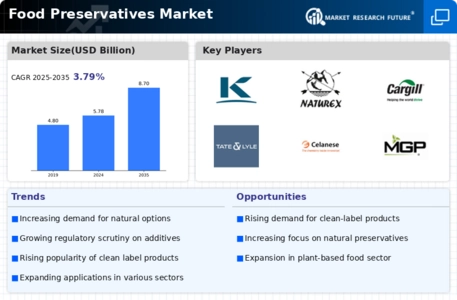
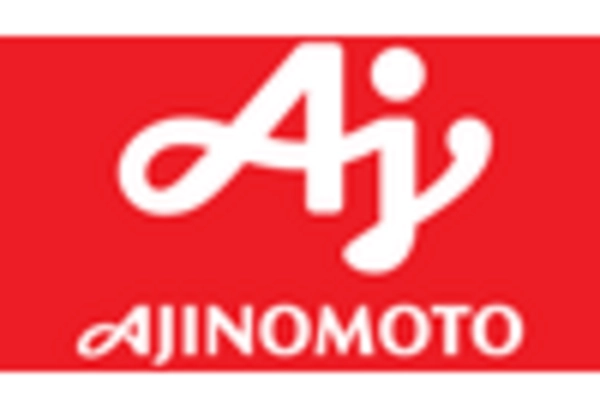

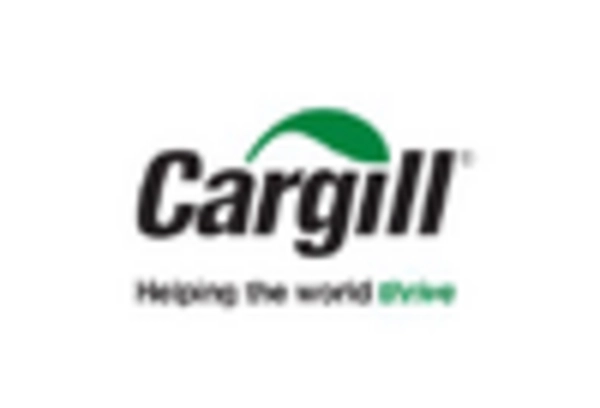
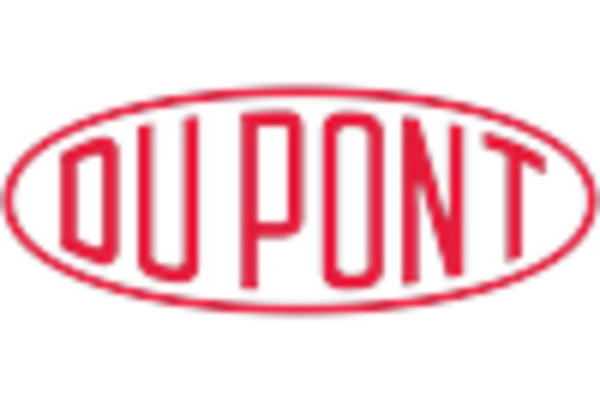
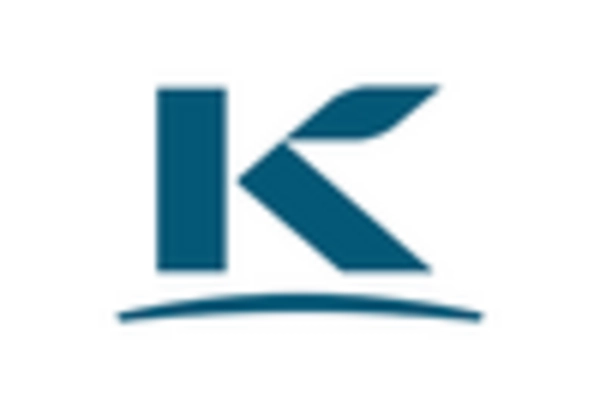


Leave a Comment